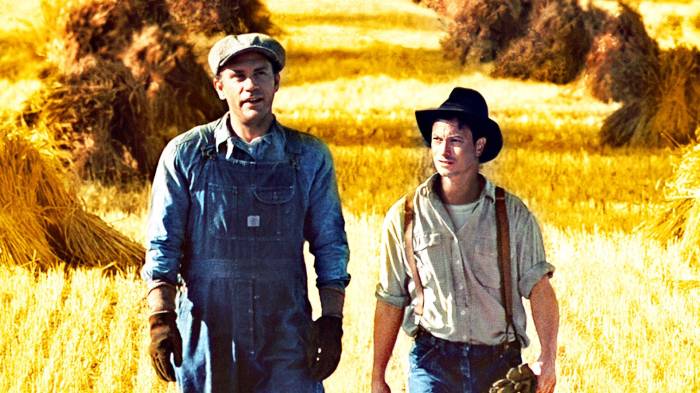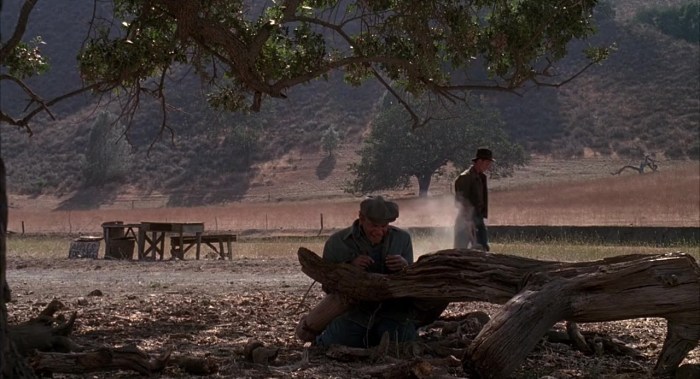Of Mice and Men: novella vs. film packet presents a captivating exploration of the beloved novella and its cinematic adaptation, delving into the intricacies of literary devices, adaptation techniques, and the profound impact of each medium on the story’s themes and characters.
This comprehensive packet unravels the nuances of foreshadowing, symbolism, and characterization, contrasting their usage in the novella and film to illuminate their distinct storytelling approaches. It examines the adaptation techniques employed in the film, such as scene additions and character omissions, and analyzes their effectiveness in translating the novella’s essence to the screen.
Comparison of Literary Devices

The novella and film of Of Mice and Men employ different literary devices to convey the story and its themes. Foreshadowing, symbolism, and characterization are used in distinct ways in each medium.
Foreshadowing
- Novella:Subtle hints, such as the description of Lennie’s size and strength, foreshadow his dangerous nature.
- Film:More explicit foreshadowing, such as the scene where Lennie accidentally kills a mouse, foreshadows the tragic events to come.
Symbolism, Of mice and men: novella vs. film packet
- Novella:The rabbits represent Lennie’s innocence and vulnerability.
- Film:The water tank symbolizes hope and the possibility of a better life.
Characterization
- Novella:George and Lennie are complex characters with both strengths and flaws.
- Film:The film emphasizes the physicality of the characters, portraying Lennie as more childlike and George as more protective.
Adaptation Techniques: Of Mice And Men: Novella Vs. Film Packet

The film adaptation of Of Mice and Men uses various techniques to translate the novella to the screen.
Scene Additions
- The film adds scenes, such as the opening scene in the stable, to provide more context and character development.
Character Omissions
- The film omits minor characters, such as Whit, to streamline the narrative and focus on the main characters.
Dialogue Changes
- The film alters some dialogue to make it more cinematic and accessible to a wider audience.
Characterization and Interpretation

The portrayal of George and Lennie differs between the novella and film, shaping the audience’s perception of these characters.
George
- Novella:A complex and sympathetic character who struggles with his responsibility for Lennie.
- Film:More heroic and protective, with a stronger bond with Lennie.
Lennie
- Novella:A tragic figure who is both innocent and dangerous.
- Film:More childlike and vulnerable, with a greater emphasis on his mental disability.
Setting and Atmosphere

The novella and film create distinct settings and atmospheres that enhance the story’s themes.
Setting
- Novella:Set in the harsh and unforgiving landscape of California’s Salinas Valley.
- Film:Set in a more idealized version of the valley, with lush greenery and beautiful scenery.
Atmosphere
- Novella:A sense of isolation, loneliness, and hopelessness.
- Film:A more hopeful and uplifting atmosphere, with a greater emphasis on the characters’ dreams.
Query Resolution
What are the key differences in the portrayal of George and Lennie in the novella and film?
The novella presents a more nuanced and complex portrayal of George and Lennie, delving into their inner thoughts and motivations. The film, on the other hand, focuses on the external dynamics of their relationship, emphasizing their physical presence and interactions.
How does the setting contribute to the atmosphere and themes of the story?
The novella’s setting on a desolate ranch during the Great Depression evokes a sense of isolation and hardship, reflecting the characters’ struggles and dreams. The film adaptation captures this atmosphere through its cinematography, lighting, and sound design, immersing the audience in the harsh realities of the setting.
What is the significance of the rabbits in the story?
The rabbits symbolize Lennie’s innocence and vulnerability. His desire for the rabbits represents his longing for a simple and fulfilling life, which is ultimately unattainable in the harsh world of the novella and film.